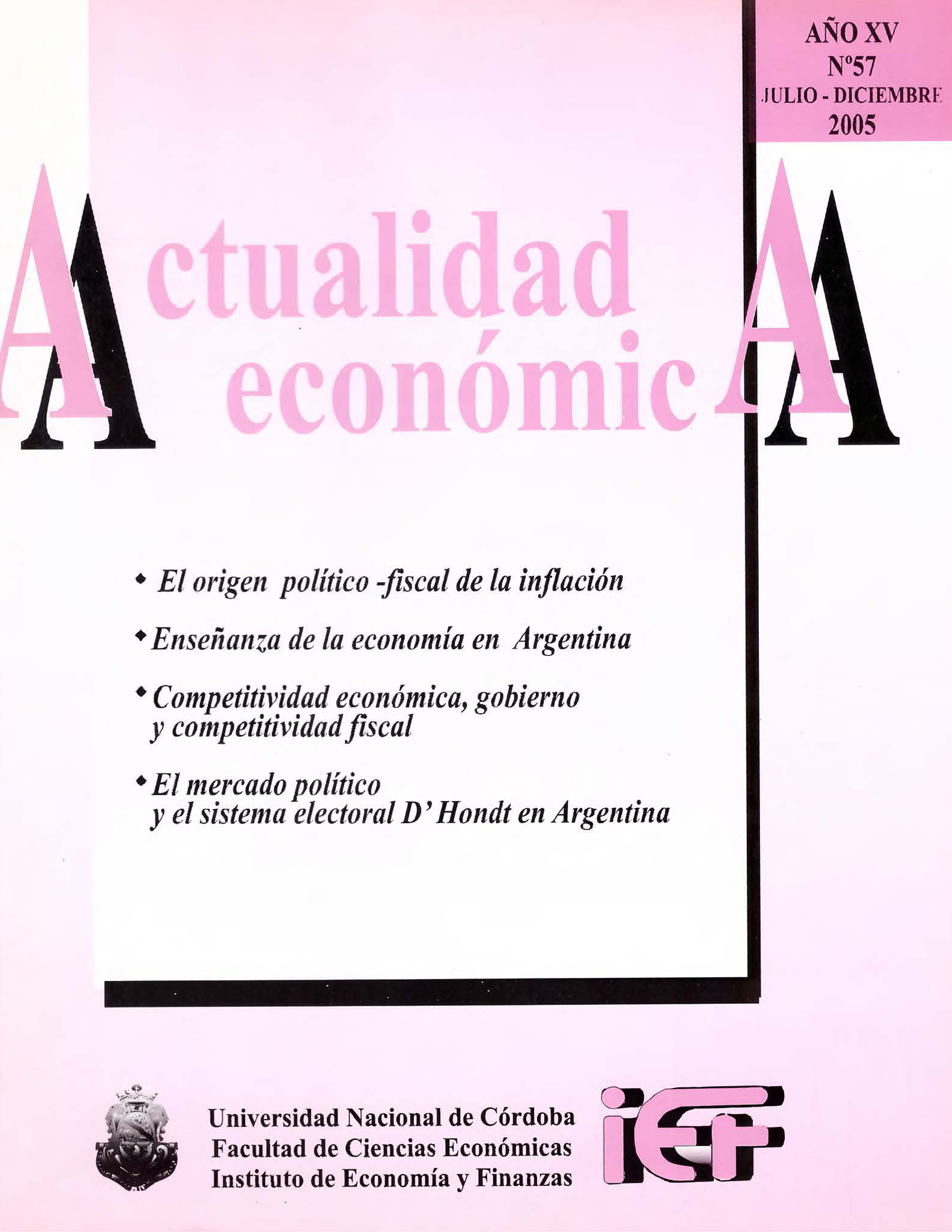The political market and the D'Hont Electoral System in Argentina
Keywords:
Electoral system, D'hont system, Social Welfare FunctionAbstract
In this brief note, we present a reflection on the still excessive simplification contained in the statement that in the political markets of supply and demand of public policies, one vote is equivalent to one unit of purchase (one peso, one dollar, one euro ) of the goods and services markets. It also concludes that the presumption that politicians elected in democratic elections faithfully reflect the preferences, tastes, scales of values and ideology of voting citizens is highly questionable, and therefore we can not precisely consider them "faithful representatives and efficient maximizers of our Function of Social Welfare ", underlying principle out of all discussion and taken as a starting point in the formal construction of most conventional macroeconomic models of general equilibrium.Downloads
References
Arrow Kenneth (1950), "A difficulty in the concept of Social Welfare", The Journal of Political Economy", Vol. 54, Issue 4 (august 1950), pags. 328-346.
Arrow Kenneth (1951), Social Choice and Individual Values. Baliski Michael y Young Peyton (1982), "Fair Representation: meeting the ideal of one man one vote", ("Representación Justa: alcanzando el ideal de un hombre, un voto"), Yale University Press, New Haven, Connecticut, USA.
Buchanan J.M., Gordon Tullock (1962), The Calculus of Consent, University of Michigan Press.
Heckleman Jack Editor (2004), Readings in Public Choice Economics.
Nohler Dieter, (1981), Sistemas electorales en el mundo, Centro de Estudios Constitucionales, Madrid.
Tullock Gordon (2000), "Government failure: a primer in Public Choice" .
Downloads
Published
Issue
Section
License

This work is licensed under a Creative Commons Attribution-NonCommercial-NoDerivatives 4.0 International License.
Those authors who have published with this journal, accept the following terms:
Authors will conserve their copyright and guarantee the magazine the right of first publication of their work, which will be simultaneously subject to the Creative Commons Attribution-NonCommercial-NoDerivative 4.0 International License that allows third parties to share the work as long as the author and first publication of this magazine are indicated.
Authors may adopt other non-exclusive license agreements to distribute the published version of the work (e.g., deposit it in an institutional telematic archive or publish it in a monographic volume) provided that the initial publication in this journal is indicated.
Authors are allowed and encouraged to disseminate their work through the Internet (e.g., in institutional telematic archives or on their website) before and during the submission process, which may lead to interesting exchanges and increase citations of the published work. (See The effect of open access)









